Whatís in the big box???
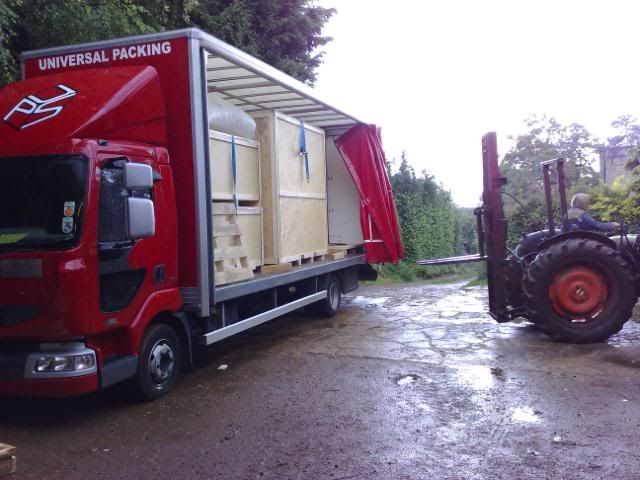
As many of you know Iíve long thought about and planned construction of a large
replica Gavioli fairground organ. This spring the opportunity to own a ďrealĒ
antique Gavi came along and provided the chance to not only have the real deal,
but to have it years sooner than would have been possible with new construction.
(As Iíve noted to some, Iíve recently made the shocking discovery that Iím
actually getting older at a rate approximating one year per year!)
Iím extraordinarily
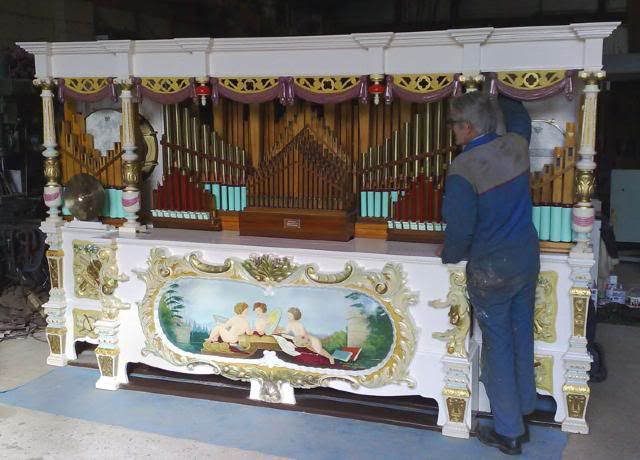
The organ has not played since the late 1960ís or early 1970ís, and has been in
parts since then, with a partially completed organ rebuild, a largely repainted
faÁade by James Tiller, and the case apparently left out in the weather. When it
was offered for sale Andrew and I inspected it and determined that it was
substantially complete and, case notwithstanding
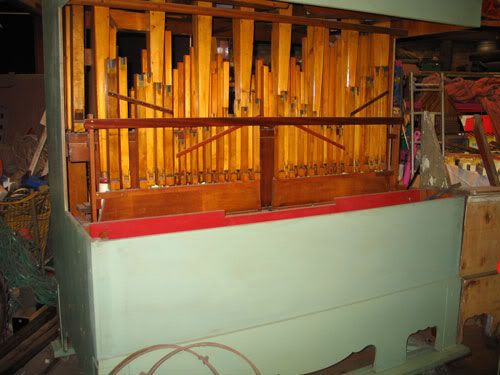



Sadly the main bellows must have gone with the original case, so it will play
using the centrifugal blower that came with it. Once the deal was complete
Andrew and Brian transported the organ to Brianís shop in Banbury and the
restoration was underway.
It was decided that although the leather was unused since installation 40 years
ago it was probably not to be trusted, and so a complete overhaul was
undertaken. The side cases were a total loss (with the picture completed when
someone sawed them in half!)
 ,
,
except for use as templates, and the main case had been replaced by a plywood
box. Brian and Dave built a replica case based on Brianís Gavi, complete with
French Walnut veneer.
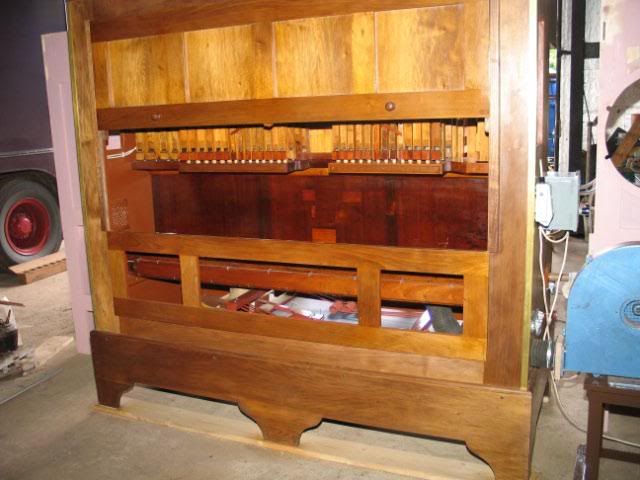
The conversion from 87 to 89 key was probably done in a rush in the field, and indeed was not complete. The saxophones were not controlled by
register key and the rank of flue pipes in the baritone was missing. The
baritones had been pasted on the front, using the large front picture to make a
sort-of box to hold the pipes. All of this was corrected during the rebuilding.
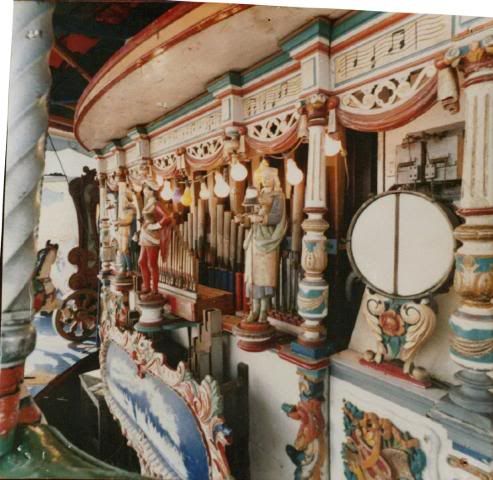
In order to be able to restore the glock that had possibly once been on the organ we
determined to relocate the baritone pipes to the drum cases and make a new shelf
extension for the front, similar to many other Gavioliís. (Whether or not this
instrument has ever previously had a glock is open to question. A reliable
historian says no, but appropriate mounting holes were found to be present on
the shelf.

Although the drum hardware was there, the drums were gone, so Andrew arranged to
have new replica brass drums made. These are just a work of art!
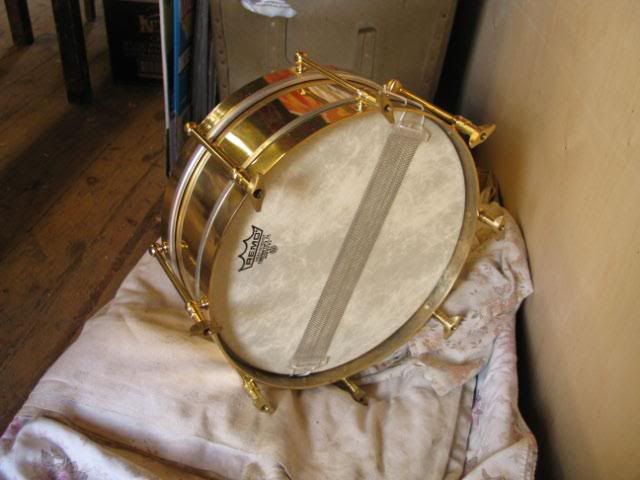
The original keyframe had been mounted in the center of the back of the organ,
the keyframe now with the organ is probably not original to the organ, though
from the number of different mounting holes perforating it like Swiss cheese
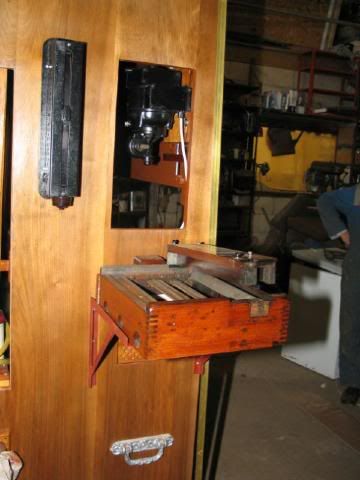
it undoubtedly has its own storied history. For the moment the organ will play
exclusively from the keyframe with a new library of music provided by Andrew and
Joan Whitehead, though, as my intention is to play the organ commercially at
fairs and events across the country most often as a one-man operation, I will
likely construct a non-disruptive MIDI interface for it.
There is work yet to be done before taking it out onto the road. The organ spent
the parts of its first working life that we know about in the centers of rides,
and so came to me with a very compact design. My uses require a somewhat more
flamboyant display, the organ will be a stand-alone attraction at fairs and
festivals, so I am building an additional set of flanking side chests that will
be purely decorative, and we will be adding a proscenium to the top of the organ
to increase itís total height to ~11 ft.
The figures were no longer with the organ, and we are working on replacements.
The new side cases will create spots appropriate for a couple of bell ringers, There is a new glock that is being made for it, that will be installed at a
later date. Discussions are under way for building a suitable display trailer
that will include a hydraulic lifting roof and amenities ranging from air
suspension, a generator, and GPS locator security system to my espresso machine.
(Donít worry, my wife will insist on a tea kettle as well Ė itís the least I can
do for such a wonderful, understanding person!)
I plan on writing up pretty much everything that I can gather about this organ
for the COAA Journal, if any of you know its history prior to the 1940ís or have
any pictures of it ďat workĒ, I would be most appreciative. Iíve gotten a great
narrative of itís history from Philip Upchurch, including recordings he made in
the Ď60ís, and have a couple of pictures of it in the Chiappa shop from the
1950ís. Any additions will get my profuse thanks and all appropriate
acknowledgment of the contribution.
It is indeed a privilege and honor to be the custodian of this piece of history
for a while. I think we have done well by it in the restoration process so far.
Iím about bursting with excitement waiting for it to arrive here and to hear it
sing live for the first time. Listening over the phone, as it played its first
book in 40 years (the day before the packers arrived!) was amazing, I canít wait
to hear it live. Sound clips will be coming just as soon as I can manage it.
A huge thanks to the restoration team:
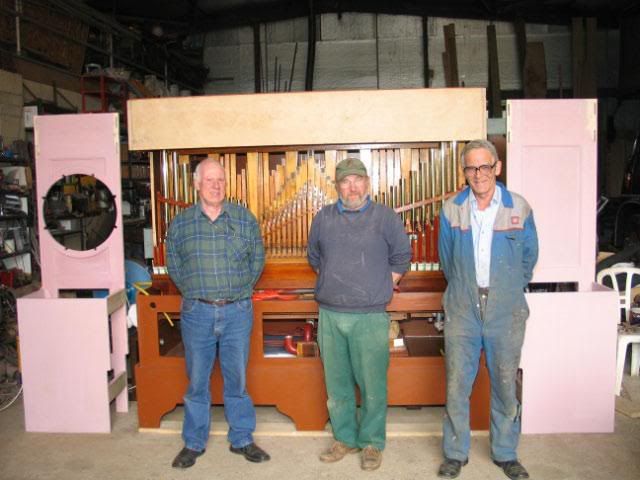
Andrew Whitehead --- Dave Heritage ---
Brian Wells